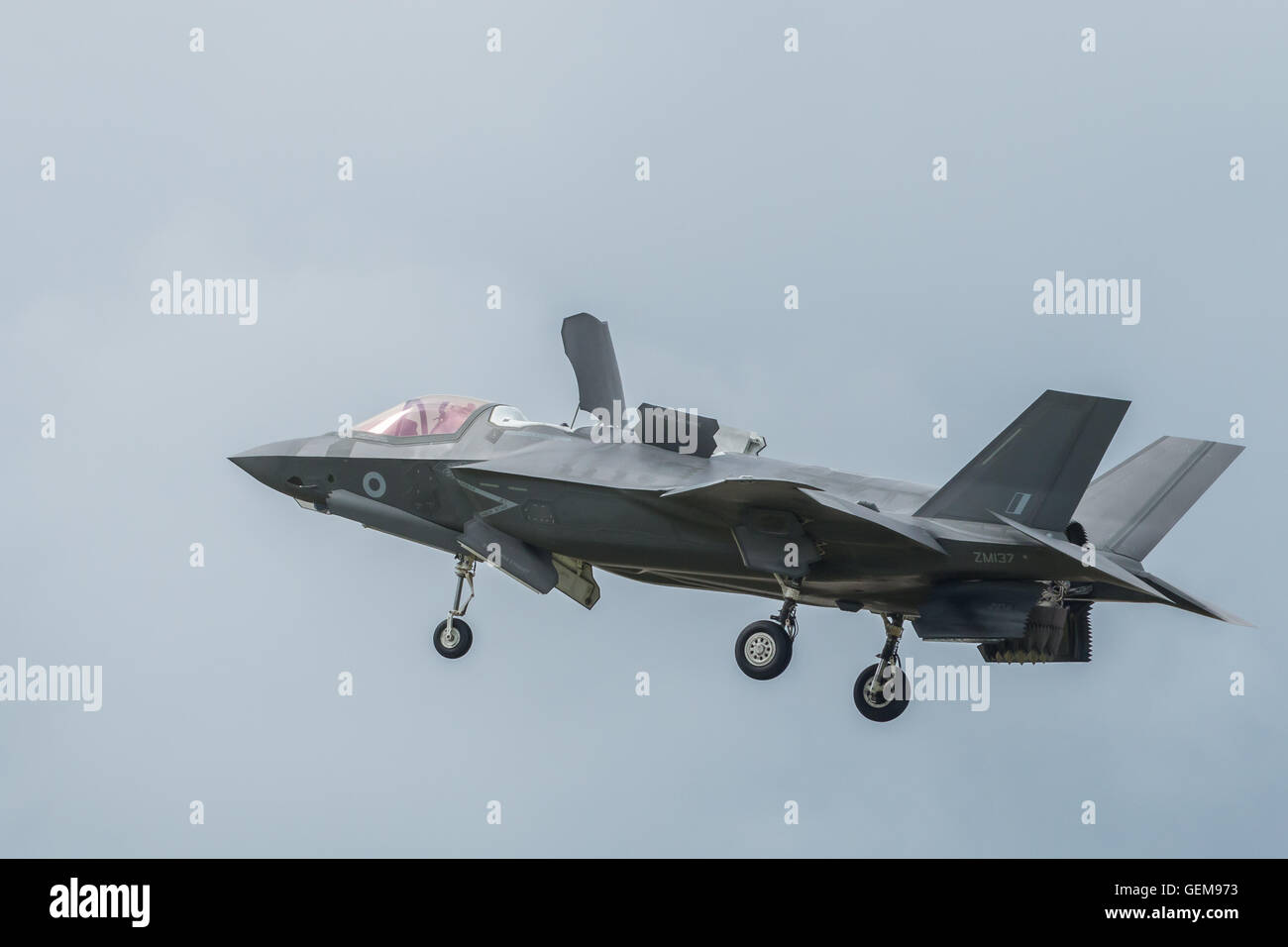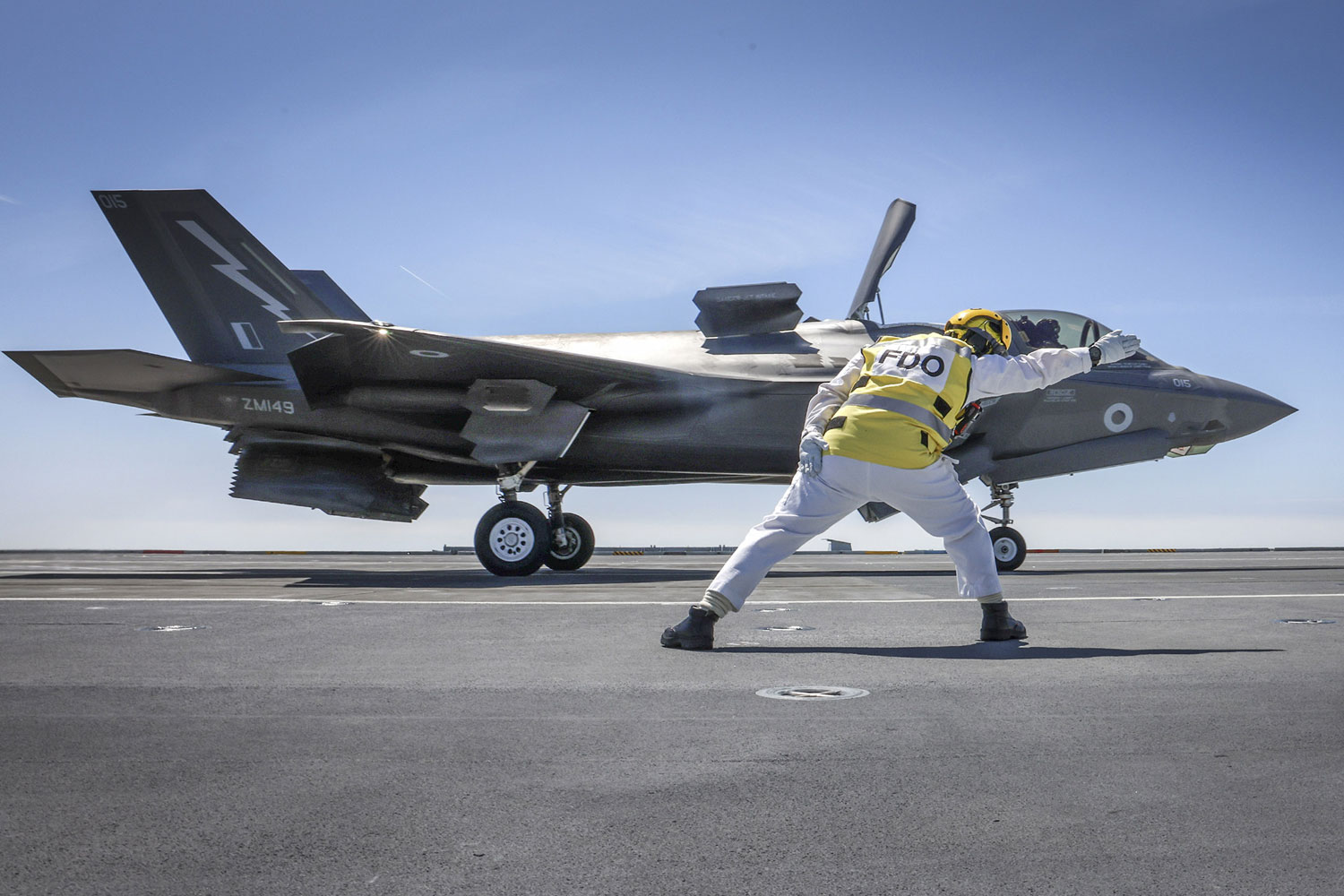Hovering Jet Fighter - On March 18, 2010, U.S. military officials turned their attention to one F-35 fighter jet stationed at a remote Naval Air Station in Patuxent River, Maryland, to see if Lockheed Martin's vaunted fifth-generation fighter could survive the all-important flight test.. in its history.
A version of the F-35B designed for the Marine Corps would do what no other aircraft has ever done: accelerate past the speed of sound in flight, then land vertically on the smallest landing footprint, much like a helicopter.
Hovering Jet Fighter

In Maryland, test pilot Graham Tomlinson's job was to climb into an F-35B and do just that: perform the first official vertical landing in the program's history.
B&w Of Hovering Av 8b Harrier With Nozzles Down
It started without a problem. After a flawless short takeoff, Tomlinson took his plane for a 13-minute spin and headed back toward the Patuxent River, carefully placing the plane directly over the intended landing zone.
Hovering gracefully, the aircraft reacted as expected. Tomlinson prepared for the descent. The moment of truth has arrived.
The effort to create a fighter that could take off and land indoors was a decades-long quest on both sides of the Atlantic. Already in 1954, Lockheed Martin was engaged in the design of experimental "vertical rising" fighters, which soon paved the way for aircraft with vertical landing, such as the British Harrier.
But unlike the Harrier, the F-35B and its Short Takeoff and Vertical Landing (STOVL) system offers both vertical landing and long-range supersonic speed in a single unit, creating a stealthy, lightning-fast fighter capable of carrying advanced weapons.
Go Ahead, China—copy Our Crappiest Warplane
Using the power generated by a single F-35 engine, a rotating jet tube that can turn 95 degrees in 2.5 seconds redirects the engine's thrust downward, while additional lift fans under the cockpit and wings produce a combined 40,000 pounds of vertical thrust.
It was all systems go on the Patuxent River. Tomlinson quickly mastered the controls and hovered steadily at 150 feet for a full 60 seconds. In a vertical landing configuration, the jets roared as Tomlinson carefully guided the F-35B to a soft landing on the 95-square-foot landing pad.
As one test pilot later observed: "You had to be an octopus to fly a Harrier." In the F-35B, another said, "It's like magic."

Just three months after its first vertical landing, the F-35B broke the sound barrier, becoming the first STOVL aircraft to exceed Mach 1. In October 2011, the F-35B made its first successful vertical landings at sea and dropped aboard. a small naval amphibious assault ship that conducted a series of weapons tests in 2012.
Supersonic Variant Of Unmanned Fighter Jet Planned
Subscribe to the Lockheed Martin Vector Star Newsletter Get articles about the innovative projects Lockheed Martin scientists and engineers are currently working on. take-off and landing operations (V/STOL). Named after a bird of prey,
It was originally developed by British manufacturer Hawker Siddeley in the 1960s. The Harrier proved to be the only truly successful V/STOL design of the many attempts during that period. It was designed to operate from improvised bases such as parking lots or forest clearings, without the need for large and vulnerable air bases. The design was later adapted for use on aircraft carriers.
There are two generations and four main versions of the Harrier family developed by British and American manufacturers:
The Hawker Siddeley Harrier is the first generation version and is also known as the AV-8A or AV-8C Harrier; it was used by several air forces, including the Royal Air Force (RAF) and the United States Marine Corps (USMC). The Sea Harrier is a naval strike/air defense fighter derived from the Peddler Siddeley Harrier; it was operated by both the Royal Navy and the Indian Navy. In the 1980s, the second generation of the Harrier appeared, produced in the United States as the AV-8B and in Great Britain as the British Aerospace Harrier II. Before the turn of the 21st century, most of the first generation Harriers were retired, with many operators choosing to offer the second generation as a replacement. In the longer term, several operators have announced plans to supplement or replace their Harrier fleets with the STOVL version of the F-35 Lightning II, designated the F-35B.
Take A Look At The Hovering F 35b Through A High Definition Thermal Imager
During the 1950s, especially in the years following the Korean War, many aerospace companies in Europe and America separately decided to investigate the potential capabilities and survivability of vertical takeoff and landing (VTOL) aircraft, which would eliminate the need for vulnerable runways lanes. with vertical take-off and landing as opposed to a conventional horizontal approach.
In addition to military applications, since the mid-1950s, the possibility of using such technology on commercial aircraft has been discussed with great interest, and the value of developing capable vertical take-off systems has been assessed as high. However, at that time, few companies imagined that a VTOL aircraft could also be compatible with the characteristics of high-performance military aircraft.
Bottom view of the first P.1127 prototype. The rotary jet nozzles were a key design element of its VTOL capability

In 1957, the British aviation conglomerate Hawker Aircraft, after being approached by the British aero engine manufacturer Bristol gine Company, which had designed an innovative vectored propeller, developed its design for an aircraft that could meet the existing NATO specification calling for "light tactical support". Fighter".
F 35b Of Vmfa 242 Doing The Hover At The Singapore Air Show 2022. Looks Amazingly Complicated. Being The Last Day, I Experimented With 840mm To Fill As Much Of The Frame As Possible. :
Used rotating cold jets placed on both sides of the compressor along with a "hot" jet directed by a conventional central exhaust pipe; This concept originates from Michel Wibault, a French aviation consultant. During most of the early development work, there was no financial support for the project from HM Treasury; however, support for the gene development portion of the effort was obtained through NATO's Mutual Weapons Development Program (MWDP).
Sior project engineer Ralph Hooper at Hawker immediately set about establishing an initial layout for a theoretical aircraft to exploit the Pegasus engine, using data provided by Bristol.
In March 1959, the newly merged Hawker Siddeley decided to privately finance two prototypes of the design, which received the internal company designation P.1127 to demonstrate the design's capabilities.
In the 1960s the P.1127 attracted the attention of the RAF; this would effectively lead to the development and issuance of Requiremt ASR 384, which required a V/STOL aircraft for ground attack operations.
F 35 Stealth Fighter In Hover Mode Editorial Photo
Around the same time that the RAF was interested in the concept, NATO continued to develop its own specification, NBMR-3, which called for vertical take-off and landing (VTOL) aircraft; specific requirements included the expectation that the presentation of such an aircraft would be equivalent to the conventional McDonnell Douglas F-4 Phantom II fighter. The specifications called for a V/STOL supersonic strike fighter with a combat radius of 460 kilometers (250 nmi), a cruise speed of Mach 0.92 and a speed of Mach 1.5.
In the early 1960s, Peddler began development of a supersonic version of the P.1127 called the P.1150, culminating in the unsuccessful Peddler P.1154. The NBMR.3 also attracted other competitors, including the P.1154's main rival, the Dassault Mirage IIIV. P.1154 was finally selected to correspond to NBMR-3; however, this did not lead to the awarding of orders.
On 6 December 1961, before the design was submitted to NATO, it was decided that the P.1154 would be developed to requirements for use by the Royal Air Force (RAF) and the Royal Navy (RN).

As a result, the development of this type continued for some time; however, by October 1963 the Air Ministry was concerned about the project's progress, concluding that the effort to combine a strike and fighter aircraft in one aircraft and attempt to fit the same airframe for both services was "weak".
U.s. Marine Corps Av 8 Harrier Fighter Jet Crashes Off Coast Of Okinawa, Japan
On 2 February 1965, the new British government canceled work on the P.1154 due to costs at the prototype stage.
In 1964, the first of these began to fly; The Kestrel was evaluated by a multinational "Tripartite Evaluation Squadron" consisting of British, American and German pilots to determine how VTOL aircraft could be operated; assessments were completed in November 1965.
In 1966, following the cancellation of the P.1154, the RAF decided to proceed with ordering a modified P.1127/Kestrel derivative for use, designated the Harrier GR.1.
The Hawker Siddeley Harrier GR.1/GR.3 and AV-8A Harrier were the first generation of the Harrier series, the first operational close support and surveillance aircraft with vertical/short take-off and landing (V/STOL) capabilities. These were developed directly from the Hawker P.1127 prototype and Kestrel taxi aircraft. On 18 April 1969, the Harrier GR.1 officially joined the RAF, with the Harrier Conversion Unit at RAF Wittering receiving its first aircraft.
Moment F 35 Pilot Ejects After Crash Landing In Fighter Jet
The United States Marine Corps (USMC) also decided to acquire this type, receiving 102 AV-8A and 8 TAV-8A Harriers between 1971 and 1976.
The British Aerospace Sea Harrier is a naval V/STOL fighter, surveillance and attack aircraft; it was a navalized development of the Siddeley Harrier Peddler. The first version retired from Royal Navy fleet service in April 1980 as the Sea Harrier FRS.1 and was unofficially known as the Shar.
Played Sea Harriers

Second degree assault washington state, 2nd degree assault sentence, 2nd degree aggravated assault, 2nd degree assault mn, 2nd degree assault, 2nd degree assault definition, 3rd degree assault washington state, 4th degree assault washington state, 2nd degree felony assault, 4th degree assault washington, what is assault 2nd degree, 2nd degree assault charges